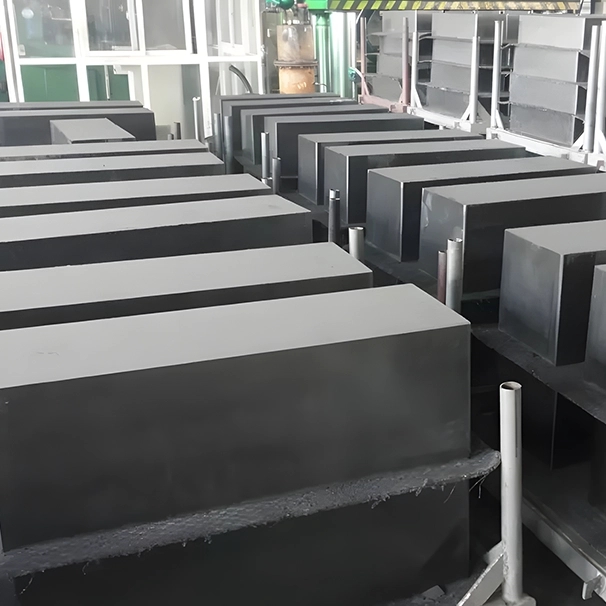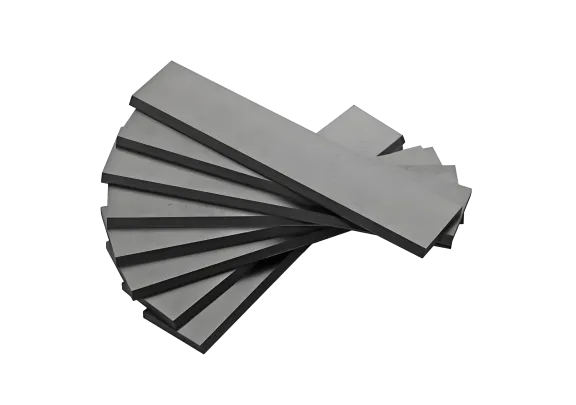
The friction between graphite particles affects their ability to slide past each other during compaction. Lower friction generally leads to better packing.
The surface chemistry of the graphite particles can influence their interaction with each other and with any binder materials used. Surface treatments can sometimes be employed to improve dispersion or adhesion.
Excessive moisture can hinder flowability and promote agglomeration, reducing packing density. Graphite powders should be stored and handled under controlled humidity conditions.
The presence of impurities can affect the final properties of the graphite component after sintering or other processing steps. High-purity graphite is often preferred for demanding applications.
This refers to the ability of the graphite powder to deform and consolidate under pressure during vibration. Higher compressibility can lead to higher densities.
A higher surface area can indicate finer particles or a more porous structure, which can influence packing density and binder absorption (if used). BET (Brunauer-Emmett-Teller) analysis is a common method to measure surface area.
How easily the graphite powder flows. Good flowability is essential for uniform filling of the mold. Factors like particle shape, size distribution, and surface characteristics significantly impact flowability. Flowability can be measured using various tests (e.g., Hall flowmeter).
This is a practical measure of how well a powder packs under vibration or tapping. A higher tap density indicates a greater ability to achieve dense packing during vibration molding. It is a direct indicator of the material's suitability for this process.
Spherical
Spherical particles generally offer better flowability and easier packing compared to irregularly shaped particles.
Flaky (Lamellar)
Graphite often has a flaky structure. This can hinder flow and packing, requiring careful optimization of vibration parameters. Orientation effects become significant.
Fibrous
Similar to flaky, fibrous graphite can create interlocking and reduce packing efficiency.
Broad vs. Narrow Distribution
A broad particle size distribution (meaning a range of sizes from very small to relatively large) is generally preferred in vibration molding. Smaller particles can fill the voids between larger particles, leading to higher packing density. A narrow distribution can result in lower densities due to uniform voids.
Average Particle Size (D50)
This influences the overall packing characteristics. Finer particles often lead to higher densities but can also increase inter-particle friction, hindering flow.
Vibration Graphite is currently divided into two grades, KB-Z1 and KB-Z2, with the main difference being that TSK has a raw particle size of 2 mm and GSK has a raw particle size of 0.8 mm. Their common characteristics are a homogeneous graphite structure, almost homogeneous in every respect, low ash content, high mechanical strength, good electro-thermal properties, and a large size, which makes it possible to use it for machining of extra-large-sized workpieces. Meanwhile, they can be further processed, such as resin impregnation and antioxidant treatment. Scope of use: Widely used in the photovoltaic industry in the production of polysilicon, monosilicon furnace in the heating and insulation of the original, but also used in foundry, chemical, electronics, non-ferrous metals, high temperature treatment, ceramics and refractories and other industries. The main products are: polycrystalline silicon, monocrystalline silicon furnace with heat generator, heat preservation cover, heat insulation screen and cover, large graphite crucible, casting molds, sintering boat, large-scale industrial electric furnace, vacuum furnace, heat generating assembly and so on.
| Projects | KBZ-1 |
KBZ-2 |
| Bulk density (min) g/cm³ | ≥1.70 | ≥1.72-1.78 |
| Particle size (max) mm | ≤2 | ≤0.8 |
|
Resistivity (max) μΩ-m |
≤15 | ≤8.5 |
|
Flexural strength (min) Mpa |
≥13 |
≥15 |
|
Compressive strength (min) Mpa |
≥28 |
≥35 |
| Porosity (≯) (%) | ≤24 | ≤20 |
| Ash (max) % |
≤0.3 |
≤0.3 |
1. all grades of ash can be purified to 50ppm.
2. Special requirements for indicators can be produced individually.
3. Density, mechanical strength and corrosion resistance can be improved by further impregnation.
| Φ400*1800mm |
Φ500*1800mm |
Φ600*1800mm |
Φ650*600mm |
Φ710*600mm |
|
Φ760*500mm |
Φ810*600mm |
Φ850*600mm |
Φ910*600mm |
Φ1000*580mm |
|
Φ1120*580mm |
Φ1220*580mm |
Φ1270*580mm |
Φ1400*500mm |
Φ1550*500mm |
|
400*400*1800mm |
500*500*1800mm |
650*500*1800 |
650*500*1800 |
760*500*1800mm |
|
810*500*1800mm |
850*500*1800mm |
940*500*1800 |
940*500*1800 |
1120*400*2200mm |

It is available from specialized manufacturers and suppliers of industrial graphite materials. Custom sizes and specifications can often be requested.
It maintains excellent structural integrity at high temperatures (up to 3000°C in an inert or vacuum environment). However, exposure to oxygen at high temperatures leads to degradation.
Graphite naturally oxidizes at high temperatures in an oxygen-rich environment. To improve oxidation resistance, coatings or impregnation with protective substances (e.g., resins) may be applied.
Yes, it can be precisely machined using standard tools for graphite processing. It is often CNC-machined into specific components for industrial use.
Vibration molding graphite is a type of synthetic graphite material produced using a vibration molding process. This method involves compacting fine graphite powder with a binder under vibration, allowing for uniform density and precise control over the final product’s properties.
High density and uniform structure Excellent thermal and electrical conductivity Good mechanical strength and machinability High resistance to oxidation and corrosion Cost-effective for large and complex shapes
Unlike isostatic pressing, which provides extremely fine and uniform grain structures, vibration molding is more suitable for large-size graphite components with good mechanical properties. Compared to extrusion, vibration molding allows for more isotropic properties but is less suitable for high-volume production of smaller components.
Metallurgical industries (casting, sintering, and furnace components) EDM (Electrical Discharge Machining) electrodes Semiconductor and solar industries Chemical processing equipment Nuclear and aerospace applications
After molding, the material undergoes a series of treatments, including baking, impregnation, and graphitization at high temperatures (2500-3000°C), to enhance its final properties.